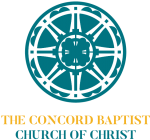History
On May 17, 1897, the Standard Union newspaper carried an article entitled, “A Half Century. The Concord Baptist Church of Christ Celebrates.” In it, the Rev. William T. Dixon, Concord’s 6th pastor and beloved elder minister in Brooklyn looked back to offer a perspective on Concord’s founding and earliest years.
Excerpts:
A Historic Sermon
“The evening service was in charge of the pastor, the Rev. William T. Dixon, who preached a historical sermon, during which he more than once caused a hearty laugh among the congregation by his witty stories of the early history of the church organization. He said in part: “Moved by the Holy Spirit to preach the gospel in another city the Rev Sampson White, then pastor of the Abyssinian Church of New York City, came to Brooklyn, and not finding an Afro-American Church, after making several visits among a few families who were members of white Baptist churches, found those who were willing to be organized into a church. Accordingly on the evening of May 18, 1847 at 6 Fair street, there assembled John J. Washington, Hagar Washington, David Pearson, Sarah Dudley, and Maria Hampton, they having received letters of dismissal from churches of which they were members, and were formally organized a “Baptist Church of Christ,” which was their name.
A New Place of Worship
“The first place of meeting of this new church was Uris Hall, then opposite the City Hall. Soon after a committee was appointed to find a more suitable place of worship and to make inquiries concerning meeting place on Tillary street, which had been offered to them for $1,200, but the church did not deem it wise to accept the offer. The Rev. Sampson White having received a call, resigned his pastorate in New York City and began his labors with the new church on July 1, 1847.”
“On September 19 a Building Committee was appointed, and under the leadership of the Divine Spirit and after many discouragements secured a lot in Concord street, on the condition that the church would erect a meeting house on the lot in six months from the date. The agent said to the committee that he would not sell to Afro-Americans, for the reason they always commenced to build but did not finish because of disputes among themselves (laughter), and that it would be a trouble to get the land back. However, the contract was signed.”
"Moved by the Holy Spirit to preach the gospel in another city the Rev Sampson White, then pastor of the Abyssinian Church of New York City, came to Brooklyn, and not finding an Afro-American Church, after making several visits among a few families who were members of white Baptist churches, found those who were willing to be organized into a church."
“The pastor being shrewd, bought for himself a pair of cheap satinet pants, and putting on a well-worn coat and an old high top beaver hat, and with a hickory cane he went among the rich men of this city and New York asking help in the name of his Lord and Master to build a house for His name. His success was far greater than he expected, for soon the foundation was built and the cornerstone laid with appropriate exercises and the house was dedicated in 1848.”
“On January 20, 1851, the Rev. Leonard Black was called as pastor, and on September 20, 1852, he was replaced by Simon Bundick, who was elected to take effect as soon as he should be ordained. He was installed on March 21, 1852.”
Coming to his own call and election thirty-four years ago, the pastor said:
“At a meeting of the church help September 28, 1863, it was, on motion, resolved to call Brother William T. Dixon, then resident in the Eastern District, to take charge of the Concord Baptist Church of Christ. He entered upon his labors October 18, 1863, with a wife and five small children and faith in his God.”
 After dwelling at length on the early trials of the church and its growth, Mr. Dixon epitomized his work as follows: “There have been received into the church as follows: From 1847 – 1863, baptism 59, letter 92, experience 12, total 163. From 1863 – 1897, by baptism 978, letter 349, experience 578; total received into the church since foundation of church, 2,068; loss by death, 255; loss by other causes, 1,000; present membership, 813; baptized by present pastor, 951.”
After dwelling at length on the early trials of the church and its growth, Mr. Dixon epitomized his work as follows: “There have been received into the church as follows: From 1847 – 1863, baptism 59, letter 92, experience 12, total 163. From 1863 – 1897, by baptism 978, letter 349, experience 578; total received into the church since foundation of church, 2,068; loss by death, 255; loss by other causes, 1,000; present membership, 813; baptized by present pastor, 951.”
The Standard Union (Brooklyn, New York)
Monday, May 17, 1897, p3.
It was the late church historian Dr. James M. Washington who confirmed the reason Concord’s second pastor, the Rev. Leonard A. Black, had such a short pastorate. Rev. Black was a fugitive from slavery, a self-liberated Black preacher, whose time as pastor was cut short by the Fugitive Slave Act. His story entitled “The Life and Sufferings of Leonard Black, a Fugitive from Slavery” was told in the genre of slave narrative and published before he was called to Concord in 1847.
Reverend Sampson White – (1847 – 1851 and 1857 – 1858)
Reverend Leonard Black, a fugitive from slavery – (1851-1852);
Reverend Simon Bundick – (1852-1856)
Reverend John Carey- (1860-1862)
Reverend William T. Barnett – (1862-1863)
Reverend William T. Dixon – (1863 – 1909)
Reverend William M. Moss – (1910 – 1919)
Reverend James B. Adams – (1920 – 1946)
Reverend Gardner Calvin Taylor (1948 – 1990)
Reverend Gary V. Simpson – 1990 – present
Bookmark this page as we will continue to unfold Concord’s very deep and rich history told through the lives of the pastors, the members – the women whose service and activism in the early 1900’s left their mark on Black history; the men who pioneered in industry, journalism, the arts; and the musicians whose contributions to worship at Concord helped to make Brooklyn known as the borough of churches.
Faith
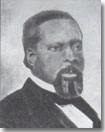
Sixteen years before slavery was abolished in the United States of America,four members of the Manhattan-based Abyssinian Baptist Church gathered on the evening of May 18, 1847, to establish the Concord Baptist Church of Christ. The Rev. Sampson White (then pastor of Abyssinian Church) and four of his members who had grown weary of crossing the river from Brooklyn to Manhattan to worship. The four founding members were: Mrs. Sara Dudley, Mrs. Maria Hampton, Mrs. Hagar Washington and Mr. John J. Washington. They called Rev. White to be their first pastor.
Freedom
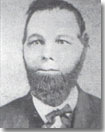
Rev. White was a well-known abolitionist. He believed strongly in the cause of black freedom and understood the precious power of faith in securing it. Rev. White led the Concord congregation in taking an active role in the anti-slavery movement,and they used their homes and church as “sanctuary” for runaway slaves. When Rev. White resigned as pastor in 1851, he was succeeded by one whose very life and presence embodied his life’s work: a runaway slave named Rev. Leonard Black. Leonard Black holds the distinction of being the shortest tenured pastor in Concord’s history. The mystery of the brevity of his leadership was revealed when Church historian and professor of Church History at Union Theological Seminary, the late Rev. Dr.James Melvin Washington uncovered Leonard Black’s written memoirs entitled, “The Life and Sufferings of Leonard Black, A Fugitive From Slavery.” As a slave, Leonard Black was determined to get an education and preach the Gospel of Jesus Christ. When he escaped slavery, he came north. At Concord Church, he found a resting place from his life on the run, and an opportunity to share his God-inspired talents and gifts. Yet, the enactment of the Fugitive Slave Act of 1850 required Free states to return runaway slaves to their previous owners. Fearing for his life and freedom, Leonard Black was once again, forced to be “on the run.”
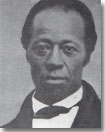
The Rev. Simon Bundick assumed the pastorate from 1852 to 1856. Rev. Sampson White returned as pastor from 1856 until 1858 when Rev. John Carey took over and served as pastor of Concord from 1858 through 1862. He was succeeded by Rev. William Barnett in the years 1862 and 1863.
Hope
In 1863, President Abraham Lincoln signed the Emancipation Proclamation, which legally ended slavery, and a spirit of hope returned to the black community of Brooklyn. Also in that year, Concord called the Rev. Dr. William T. Dixon to become its sixth pastor. Rev. Dixon, who was only 22-years old when he was called to the Concord pulpit, helped Black Brooklynites to seize the spirit of hope for their future. Under his leadership the church experienced an influx in membership and by 1872, the congregation was too large for its Concord Street edifice and made the first of many relocations.
Rev. Dixon was affectionately called “Father Dixon” and was widely viewed as the “Pastor of all of Brooklyn.” Over the span of his 46-year pastorate, from 1863 to 1909, the church grew and prospered and its name and influence greatly increased throughout America. When he died in 1909, 6,000 people attended his funeral services. He was heralded in newspapers as one of the most prominent African-American pastors of his day, “The Dean of Colored Pastors.”
Determination
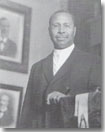
Upon the death of Father Dixon, Rev. Dr. William M. Moss was called to lead. The bespectacled Dr. Moss was what Dr. Cornel West describes as an “organic intellectual” and he dedicated his mind to the life of the church. Deeply concerned about the daily realities of life for former slaves, slave descendents and poor people who had migrated to Brooklyn from the South, Dr. Moss called attention to issues that were still oppressing his people: unemployment, substandard housing, and substandard education. Dr. Moss was instrumental in the founding of the National Urban League. A gifted pastor, Dr. Moss served Christ, the cause for black freedom and Concord church well.
In 1917, the church moved from Duffield to Adelphi Street in order to better accommodate a growing congregation and expanded services. Later, when the congregation again moved to accommodate its growing membership, it left behind a stained glass representation created in homage of the esteemed Rev. Dixon at the Adelphi Street location.
Outstretched Arms
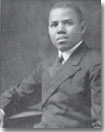
In January 1921, the Rev. Dr. James B. Adams, a young Army chaplain who had served as an Assistant Pastor to Dr. Moss assumed the Concord pulpit. Young, energetic and envisioned, Dr. Adams led the congregation into areas of community outreach never before imagined by a black congregation in America. During his tenure, Concord expanded its reach into the black community. Concord’s development of religious education programs led to the church’s becoming a national model for the training of lay people in enlightened Christian discipleship.
In 1939, Dr. Adams secured the Marcy Avenue edifice for Concord – a major feat for an African-American congregation at that time. In the fall of 1946, The Concord Baptist Church of Christ was almost 100 years old. In its first 100 years, this congregation had:
• Witnessed powerfully to the vision of black freedom in its calling of a runaway slave to be its second pastor
• Compelled black Christians to reach and stretch for hope even in the face of the devastating disappointments of federal laws
• Heralded to the world God’s claim that black lives were precious in its support for national organizations that sought to protect former slaves, slave descendants and poor people from the savagery of Jim Crow, American poverty and injustice
• Offered witness to the power of Jesus Christ to change lives beyond circumstances.
Justice
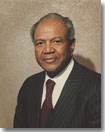
Eight months before it was preparing to celebrate its 100th Anniversary, the Concord Congregation had to “bear each other up” as they said goodbye to Dr. Adams who passed away after 26 years of leadership. The centennial celebration brought to Concord’s pulpit the 29-year old Gardner Calvin Taylor from Baton Rouge, Louisiana. In March 1948, the congregation called him to be their pastor.
On the evening of October 2, 1952, Concord’s beloved church edifice on Marcy Avenue was completely destroyed by fire.
While the entire block was left in ashes and debris, miraculously, the church membership roll was spared destruction by a fallen sheet of roofing tin. The congregation was indeed stunned by the loss. Even though they had to return to the Adelphi Street church to worship and labor, and though they now stood in the midst of loss and the prospect of having to raise money for a new home – the spirit of hope prevailed. Its church records show that while the church building was destroyed completely by fire, at its business meeting in November of 1952 before discussion was even entertained on the securing of its own future home, the congregation demonstrated its faith in God — and voted to give a donation to the Y.W.C.A. In fact, in the year immediately following the church’s destruction by fire,the Concord congregation rose to send financial support to the United Negro College Fund, the NAACP and the National Urban League.
On Friday, April 5, 1955, the congregation marched from St. Augustine Episcopal Church into lower Concord, its new Memorial Hall. Almost one year later on the June 1, 1965, the church entered the completed Concord Sanctuary, seating 2,250 people. The reconstruction cost $1,700,000 and special legislation was passed in New York State for banks to work together for the financing.
The people of Concord church expanded their commitment to the community.
Dr. Taylor led the church deeper into the national struggle for civil rights in the United States. When the National Baptist Convention gave lukewarm support to the civil rights agenda advanced by Dr. Martin LutherKing, Jr. and other civil rights activists and people of faith, Dr. Taylor was instrumental in helping to found a new national fellowship for black Baptists (the Progressive National Baptist Convention) and marshaling resources for people of faith to fight for American justice.
At home, the congregation reached deeper into Bedford Stuyvesant with a succession of community-based, care-centered outreach ministries. Each was born out of important principles of black faith:
The Power of the Black Dollar
In 1950, while many banks would not make loans to the newly migrating Negro from the South, Concord Church began the visionary work of the Concord Credit Union. Additionally, In 1988, the Concord Christ Fund was established to support organizations working for the uplift of Central Brooklyn’s neighborhoods and people.
The Power of Education
Under the guidance of Mrs. Laura Scott Taylor, the congregation established the Concord Baptist Elementary School in 1960, the first elementary school chartered in New York State solely by a single congregation.
The Power of Community and Care
The Concord Home Services for the Elderly, the Concord Nursing Home and Rehabilitation Center, the Concord Seniors Residence, the Concord Family Services and the Concord Clothing Exchange were established to strengthen the network of care for the community of Bedford Stuyvesant. Dr. Taylor retired in 1990 after 42 years as pastor and was honored by the congregation with the title of “Senior Pastor Emeritus.”
The Power of Love
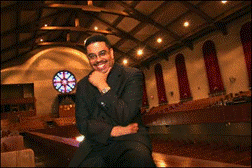
In 1990, the Concord congregation called the 27-year old Gary V. Simpson to be its 10th Pastor. Building on a legacy of faith and commitment to justice, Concord Church is now immersing itself in a new mission for a changed world.
Fueled by the love of Jesus Christ, the church is building its ministries, and working to expand, deepen and broaden its witness.
Concord Church has become a Tithing Congregation. Fully 10% of its gathered resources are given out to missions – to influence and empower positive change. One of the first institutional milestones of this new commitment is the congregation’s partnership with Habitat for Humanity. With a $100,000 commitment from the Concord congregation, Habitat for Humanity has led the building of the Concord House to provide affordable housing for Brooklyn families in need. As chair of the Fund for Theological Education, a national organization dedicated to funding theological education (the very kind of pastoral leadership education that our second pastor-Leonard Black – escaped slavery to pursue!),
Pastor Simpson’s passion for leadership development has been met by the congregation’s passion for the training of young ministers. Now recognized as a “teaching congregation,” Concord provides a vibrant home for young ministers to learn what it means to “become pastor.” In 2002, the Lilly Endowment, Inc. affirmed this shared gift of pastor and congregation by awarding the church a major grant to establish the Concord Pastoral Residency Program – a Transition into Ministry program for recent seminary graduates. This ministry is enabling Concord to make a major contribution to the preparation of the next generation of pastors for churches in the United States.
In June, 2006, Concord Church hosted the BlackBrooklyn Empowerment Convention which brought together community leaders to tackle issues of critical importance to the black community. In an effort to teach our people how to break the shackles of financial bondage, the Concord Financial Literacy Series was launched in October 2006.
Facing an incredibly changed world, Pastor Simpson is leading the congregation to discern a new call from God. How do we share the power of Jesus’ message of salvation, redemption and liberation with our people who, though no longer enslaved on southern plantations, are now enslaved by creditors, addictions, fragile health, the pandemic of HIV/AIDS, poor education and the tyranny of community violence? How do we tap into the hopes of a new generation, stir up their gifts, stoke their fires for the work of justice and encourage them to embrace the kind of hope that is only found in God?
“I no longer call you servants; for the servant does not know what the Master is doing…I call you friends.” John 15:15
God’s call to serve this present age will be answered by the Concord congregation in love. It will arise out of our worship of God. It will be sharpened in our study and commitment to education and developing leaders. It will be expressed in our pursuit of justice for God’s people. It will be shared as we witness as friends of God to our community.
“Creating a community of friends, witnessing for Christ.”
